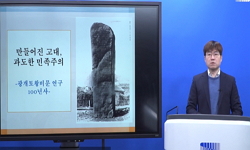이 연구는 264 청포도 와인’을 문화의 표현 수단이자 기호가 담긴 소비재로 보고, 그 상품화의 민족주의적 맥락과 의미를 분석하고자 한 것이다. 이 와인은 안동 출신 저항시인 이육사의 시 ...
http://chineseinput.net/에서 pinyin(병음)방식으로 중국어를 변환할 수 있습니다.
변환된 중국어를 복사하여 사용하시면 됩니다.
- 中文 을 입력하시려면 zhongwen을 입력하시고 space를누르시면됩니다.
- 北京 을 입력하시려면 beijing을 입력하시고 space를 누르시면 됩니다.
https://www.riss.kr/link?id=A109111524
- 저자
- 발행기관
- 학술지명
- 권호사항
-
발행연도
2024
-
작성언어
Korean
-
주제어
264청포도 와인 ; 상품화 ; 문화적 맥락 ; 기호 ; 지역문화상품 ; 민족주의 ; 264 White Wine ; commercialization ; cultural context ; symbol ; local cultural products ; nationalism
-
KDC
380
-
등재정보
KCI등재
-
자료형태
학술저널
- 발행기관 URL
-
수록면
441-469(29쪽)
- 제공처
-
0
상세조회 -
0
다운로드
부가정보
국문 초록 (Abstract)
이 연구는 264 청포도 와인’을 문화의 표현 수단이자 기호가 담긴 소비재로 보고, 그 상품화의 민족주의적 맥락과 의미를 분석하고자 한 것이다. 이 와인은 안동 출신 저항시인 이육사의 시 <청포도>를 모티프로 한 ‘문학작품의 이미지를 활용한 재현적 상품’이다. 소비재에는 문화적인 범주와 원리를 표현하는 코드와 기호가 함축되어 있고, 따라서 문화상품인 264 청포도 와인의 개발과 생산, 소비는 문화적인 작업이다.
264 청포도 와인의 작명방식은 숫자 ‘264’와 시인 ‘이육사’를 연결하고, 원재료명인 ‘청포도’를 시 <청포도>와 연결하는 간접적이면서 중의적인 작명방식이다. 또한, 생산 주체는 청포도의 껍질을 제거하지 않고 양조하여 생기는 쓴맛과 떫은맛을 민족시인의 고된 생애, 그의 저항적 문학작품과 결합한다. 이는 식민지 경험에서 나오는 사회적인 공감과 의식을 통해 소비자에게 민족적인 저항의식을 일깨우도록 하는 것이다.
따라서 독립운동가이자 민족시인의 대표적인 저항시에서 착안하여 개발된 264 청포도 와인은 민족주의적 의미가 부여된 문화상품으로 볼 수 있다. 그러나 개발자 겸 생산자가 생산한 기표와 소비자가 생각하는 기의 사이의 상호 소통이 원활하게 이루어진 측면도 있지만, 전달되지 않는 기표도 있다.
수많은 상품 속에서 살아가는 현대인들의 일상문화를 탐구하는 민속학은 지역문화상품 개발의 과정과 논리를 탐구하되, 생산자와 소비자의 관계, 원천문화, 지역정체성, 관련 이미지 등을 활용하는 방식을 주목한다. 이 연구에서는 안동에서 개발한 와인에 가치를 부여하기 위해 저항시인 이육사의 <청포도>를 원천문화로 활용함으로써 민족주의적 의미가 부여되는 과정을 조명하였다.
다국어 초록 (Multilingual Abstract)
This study aims to analyze the nationalistic context and meaning of commercialization by seeing 264 White wine as a means of expression and consumer goods containing symbols of culture. This wine is a reproducive product using the image of literary wo...
This study aims to analyze the nationalistic context and meaning of commercialization by seeing 264 White wine as a means of expression and consumer goods containing symbols of culture. This wine is a reproducive product using the image of literary works based on the poem <Green grapes> by Lee Yuk-sa, a resistance poem from Andong. Consumer goods contain codes and symbols expressing cultural categories and principles, and therefore the development, production, and consumption of 264 green grape wine, a cultural product, are cultural tasks.
The naming method of 264 White wine is an indirect and intermediate naming method that connects the number 264 and the poet Lee Yuk-sa, and connects the raw material name Green grape with the poem <Green grapes>. In addition, the producer combines the bitter and bitter taste generated by brewing without removing the skin with the hard life of the national poet and his works of resistant literature. This is to awaken the consumers sense of national resistance through social empathy and consciousness arising from the colonial experience.
Therefore, 264 White wine, developed based on the representative resistance of independence activists and national poets, can be seen as a cultural product with a nationalistic meaning. However, while communication between the signs produced by developers and producers in the area of nationalism has been facilitated, there are also signs that have not been delivered.
Folklore, which explores the daily culture of modern people living in numerous products, explores the process and logic of the development of local cultural products, but pays attention to the method of utilizing the relationship between producers and consumers, source culture, local identity, and related images. In order to give value to the wine developed in Andong, this study highlighted the process of giving nationalistic meaning by using Lee Yuk-sas <Green Grape> as the source culture.
목차 (Table of Contents)
- 국문초록
- Ⅰ. 머리말
- Ⅱ. 저항시를 모티프로 한 와인의 상품화
- Ⅲ. 작명방식과 양조법에 소환된 저항정신
- Ⅳ. 상품명 세분화에 담긴 민족주의적 의식
- 국문초록
- Ⅰ. 머리말
- Ⅱ. 저항시를 모티프로 한 와인의 상품화
- Ⅲ. 작명방식과 양조법에 소환된 저항정신
- Ⅳ. 상품명 세분화에 담긴 민족주의적 의식
- Ⅴ. 맺음말
- 참고문헌
동일학술지(권/호) 다른 논문
-
- 비교민속학회
- 임장혁(Im, Jang-Hyeok)
- 2024
- KCI등재
-
비교민속연구에서 세계상민학(世界常民學)으로 -복(福田)사상과 세계평화-
- 비교민속학회
- 사노겐지(佐野賢治)
- 2024
- KCI등재
-
성속(聖俗)의 이중구조를 통해 본 비교불교민속론 - 싯다르타 탄생담의 연꽃 모티브를 사례로 -
- 비교민속학회
- 편무영(Pyeon Moo-Yeong)
- 2024
- KCI등재
-
저항 혹은 포섭의 수단으로서의 신화와 역사 - 네팔의 라칸 타파 서사를 중심으로 -
- 비교민속학회
- 박정석(Park, Jeong-Seok)
- 2024
- KCI등재





 DBpia
DBpia






